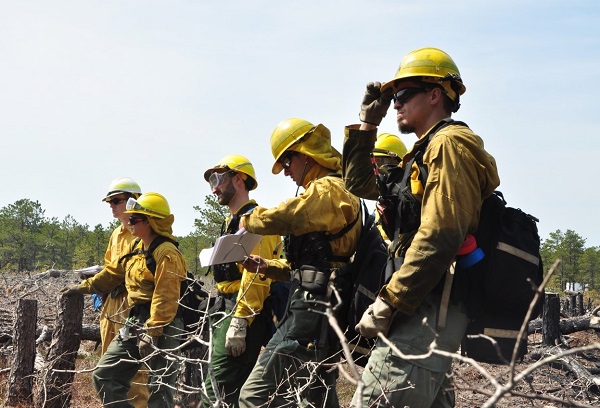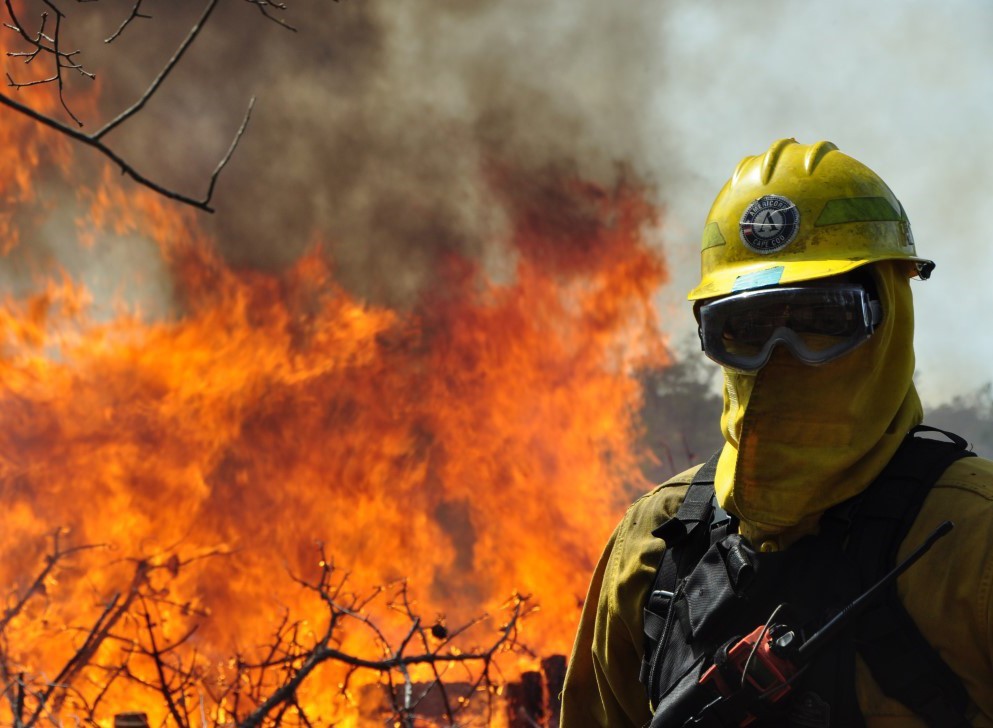You are viewing ARCHIVED content published online before January 20, 2025. Please note that this content is NOT UPDATED, and links may not work. Additionally, any previously issued diversity, equity, inclusion or gender-related guidance on this webpage should be considered rescinded.
Author: Tina Boehle, NPS; Robyn Broyles, BIA; Jessica Gardetto, BLM; Genevieve Giaccardo, OWF
Each year within the Department of the Interior, the Office of Wildland Fire (OWF) manages nearly $1 billion in funding and coordinates its distribution to the four bureaus (Bureau of Indian Affairs, Bureau of Land Management, Fish and Wildlife Service, and National Park Service), which conduct wildland fire management services that protect, restore, and manage our nation’s treasured landscapes. Of the nearly 70,000 employees of the Department, approximately 5,000 of them are wildland firefighters. Facing a changing and complex landscape that will have even greater demands in the future, our workforce must be as aggressive and dynamic as the landscape they will be managing over the next 100 years.
According to the 2014 Quadrennial Fire Review, anticipated challenges include a declining number of fire-qualified
personnel; rapid retirements that are challenging our ability to preserve and pass down institutional knowledge; broad shifts in market demand for labor; and changes in the way Americans prefer to learn and work. All of these challenges require adaptive workplace practices and training. The Department is committed to promoting a workforce that is just as diverse and multi- faceted as the landscapes they manage.

FireCorps volunteers serving and learning at Cape Cod National Seashore. Photo by: Cape Cod National Seashore, NPS.
In the world of wildland fire management, training is a mix of classroom and hands-on experience. Vital to the process is experience on the fireline, with a Pulaski in hand as a wildland firefighter. These firefighters serve on engine, helitack and hand crews. They serve on fuels modules, rappel out of helicopters, and after extensive training and experience, some jump out of airplanes to provide fire response services. But managing wildfires begins long before a fire starts and ends long after it is out.
Fire management officers develop fire management plans and oversee staffs that perform hazardous fuel removal projects. Fire planners develop complex models that assess and determine workload needs and demands.
GIS specialists develop maps and data that support decisions. Incident management teams use specialists that move people, equipment and supplies, track and manage budgets, provide public information, and help personnel meet training needs to develop qualifications.
Medical personnel are a necessary part of our workforce that develops standards and medical programs that focus on reducing the amount of risk firefighters in which are exposed. Radio technicians develop programming software that repairs the communication equipment firefighters need to communicate from one valley to the next, while meteorologists use portable weather stations to provide timely weather forecasts that fire managers need to make decisions.
The Department’s wildland fire workforce always has specialists who are teachers, budget analysts, and economists. Many have backgrounds in forestry, biology, natural resources, and fire science. As the use and demand for technology increases, so too will personnel with degrees in information technology, communications, public administration, and emergency management, to name a few. Fire management in the United States has evolved over the last 100 years; so will our workforce, using both science and traditional knowledge.
As leaders in land management, we look forward to building a sustainable wildland fire workforce over the next 100 years. This means building an organization that is easy to navigate, supportive of employee work/life balance, and full of career paths that give employees the opportunity to grow through every step of their career.
For Immediate Release: February 1, 2018


